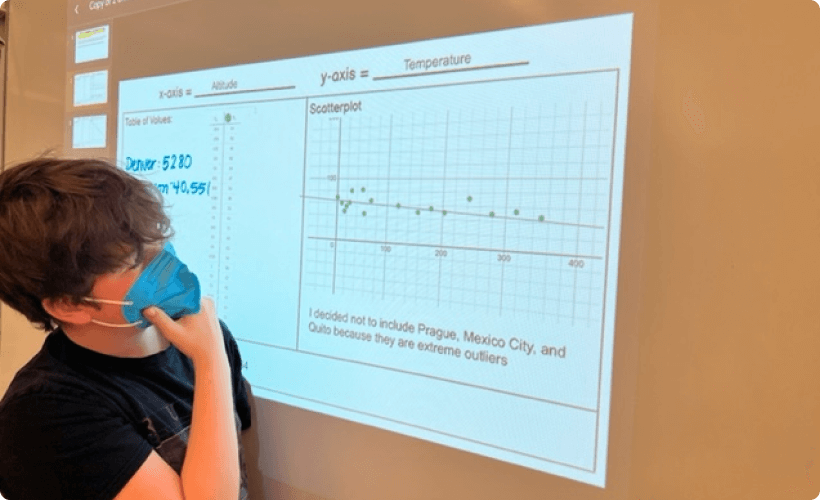Students in Grade 8 have been putting their linear function skills to work as they try to graphically identify the temperature zones in which they would most like to live. After studying linear equations, linear inequalities, and systems of equations and inequalities, students sought to define the relationship between latitude and temperature as well as the relationship between altitude and temperature using linear models. First, they researched a list of twenties cities of their choosing, recording each city’s average annual temperature, latitude, and altitude. Next, they graphed their results in two separate scatter plots and, using linear regression, established a line of best fit for each scatter plot. Then, they tested their lines for accuracy by plugging in a city that was not on their list. Finally, they narrowed down their ideal temperature zones by replacing their equal signs with inequality symbols.
Assessment projects like this one are a valuable aspect of the IB philosophy, as they demonstrate how students might use their skills in the future. While tests can evaluate a student’s ability to perform an isolated skill, we are very rarely asked to complete test-like tasks in our adult lives. More often, we are asked to examine situations and evaluate how we might solve particular dilemmas using the skills, knowledge, and logic we possess.Often, in our careers, we are also asked to communicate these situations and their solutions through meetings and presentations. A project like the one described here asks students to call on a variety of skills (in both algebra and other areas) and teaches them to segment their workload, reflect on the accuracy of their work, and present their work in a formal manner. Students will be evaluated on IB Criteria D: Applying mathematics in real-life contexts, which encapsulates the NCTM and common core process standards of problem solving, reasoning and proof, communication, and representation.




